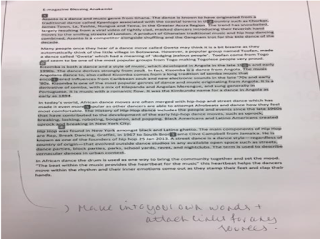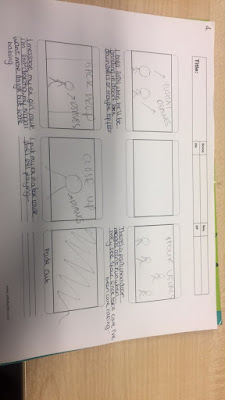Both articles helped me gain more information about African
culture and their dance when researching to include more information for my
target audience. The research helped me decide on final drafts and how I should
organise my article. Research was very important as it made me aware of not
what to include. To complete a good article I research formats of other
articles which may or may have not had the same article as mine and it helped
me have an idea of what my final article will look like. By researching all
these articles it helped me see that not all articles are over loaded with
text. Many include images that suit with the article. I found this interesting
as I could add content but I could switch it up with my own primary sources and
own written text. I came across videos on YouTube that showed me different
styles of dance that are popular within the African community and it helped me
complete my article based on history of the African culture.
Over all research helped me a lot as my written style in my
own article improved in my final draft. I looked at how text was positioned and
that the fact that text was not overwhelming. My written style depended on the
target audience, in one article it was mainly formal but within the other it
had a mixture of informal and formal text according to my target audience, but
for my teen articles I will include an interview which will relate to the
reader. My layout ideas came very quickly as I got ideas from my research. I
made sure I experimented with columns and gutters, I also changed positions of
my images so I could decide my final look. The research was a good impact as I
knew what content to include in my articles. I made sure my text was written
well and wouldn’t be biased towards anyone. I also made sure my content was
true and not fake as viewers may be upset by the content produced. My mode of
address was different for both target audiences.
As one of my articles was about rivalry of two dance groups
which was mainly informal and based to inform the audience about two dance
groups who are popular within east London. In another article I made it very formal
with facts about the history of the African dance culture and made sure there
were no jokes included as it was very serious and straight forward.








































